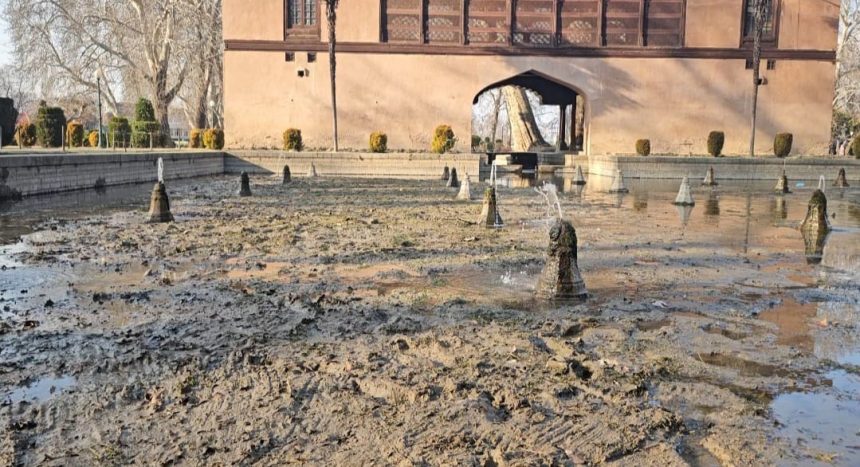Anantnag, Feb 15: The famous spring at the tourist spot Achabal in Anantnag has almost completely dried up, along with the Aripath Nallah. These two water sources collectively supplied as many as 35 water supply schemes, serving dozens of villages in Anantnag.
Experts attribute the drying up of these springs and the resulting water shortages downstream to climate change, low precipitation, and minimal snowfall. Prof. Gh Jeelani, Dean, School of Earth and Environmental Sciences, University of Kashmir, told Rising Kashmir that with an almost 80 percent precipitation deficit, many water sources are at the risk of drying up. He said that the Achabal spring, which originates from a nearby nallah where a sinkhole had formed in the past, has dried up due to low precipitation and reduced snowfall.
He said that many other springs could face a similar fate if there is no significant rainfall in the coming months. “The snowfall deficit and lack of rainfall have disrupted the natural process that regulates the flow of springs and recharges groundwater and streams. Without this natural replenishment, the drying up of springs is inevitable,” he said. “This issue will persist throughout the year, and the government must take immediate measures to address it. Water should not be wasted unnecessarily, as the ongoing scarcity may lead to prolonged water shortages.”
Muhammad Ramzan, a 65-year-old resident, said that he has witnessed such a situation for the first time in his life. He described it as alarming that the spring has run dry, affecting the water supply to several villages. He added that the spring was the primary source of drinking water for the people and also helped irrigate orchards and agricultural land downstream.
Shabir Ahmad, a local resident, said that this is the first time he has seen the Achabal Spring completely dry. He attributed this to climate change, citing minimal snowfall and a rainfall deficit as key factors. “We, as common people, have also failed to protect water bodies, and we all need to introspect. The areas surrounding Achabal are facing severe drinking water shortages, as the spring was the main source of water. Agriculture and horticulture have been severely impacted as well,” he said.
Gowhar Hussain Ganie, Assistant Executive Engineer (AEE) at Jal Shakti Sub Division Anantnag, told Rising Kashmir that Achabal Spring caters to over 15 villages. With the spring drying up, these villages are now being supplied with water through tanker services. He said that as many as 13 water supply schemes rely on Achabal Spring as their source, and with 80 percent of them running dry, the department has intensified its efforts to provide water. “We are reaching out to villages with tankers, and with the little water available in Achabal, we are supplying two to three villages on alternate days,” he said. “Similarly, in the Utrsoo sub-division, the Aripath Nallah, which caters to 22 schemes, has also dried up. With minimal discharge remaining, the department is managing to supply a couple of villages on alternate days. This source previously served several villages, which are now also dependent on tanker services,” he added.








